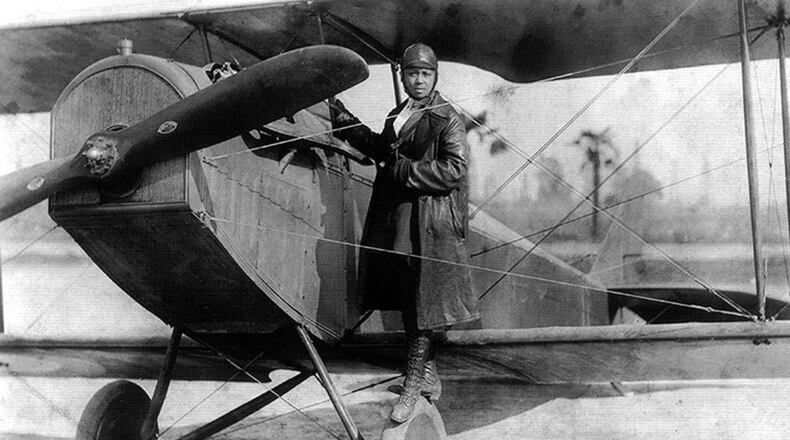“This is a new type of presentation we are adding this year to share live theater with our audience,” said Kat King, attractions events and group sales manager, Air Force Museum Foundation Inc.
King has a background in live performance and said she wanted to bring a performance to the stage to bring history to life.
“That means not just watching it on a screen but having someone to watch, interact with and portray a hero in aviation history and really be able to hone in on who they were and the advancements they made,” King said.
“Having live performance on our stage is exciting itself, but to be able to tell Bessie Coleman’s story is incredible,” King continued. “To be able to have her great-niece in is just unbelievable. I believe it’s really meant to be to have her story told here.”
The performance will help make more people aware of history that is not often taught in schools, King added.
“Her story is so important. Bessie broke many barriers and paved the way for other aviators,” she said.
Coleman-Brooms said she continues to tell her great-aunt’s inspirational story so she can keep her legacy alive.
“She is a historical hidden figure. During my performance, I provide information that you cannot get on the Internet or in the history books about my aunt and her family,” she said in a release. “I am passionate about sharing her story and helping inspire our youth to explore careers in aviation as well as follow their passions and dreams.”
Bessie Coleman’s legend as an aviator began when she traveled to France to attend flying school because she was denied being able to do so in the U.S. She took only seven months to earn her wings, demonstrating fearless techniques as a barnstormer, stunt flyer, parachutist and performer of aerial tricks. In 1922, she became the first African-American woman in America to make a public flight. In 1926, Coleman 34 years old when she was killed while rehearsing for an air show.
Her life has since inspired numerous tributes, including a 32-cent commemorative postal stamp issued on April 27, 1995, in Chicago. Bessie’s niece, the late Marion Coleman, who was Coleman-Broom’s mother, petitioned for the postal stamp in her honor. The stamp shows Bessie Coleman wearing the leather helmet and goggles she wore as a 1920s barnstormer.
For more information and to order tickets, go online to www.afmuseum/livinghistory or call 937-656-9631.
About the Author
